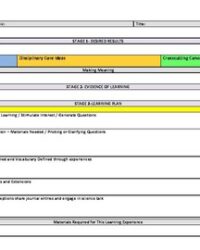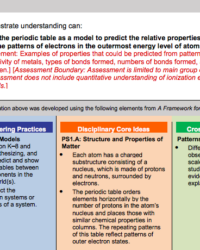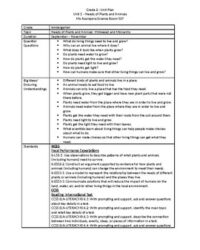Teaching science in today’s dynamic world is an exciting challenge, isn’t it? We’re moving beyond simple memorization of facts and into a realm where students actively explore, question, and make sense of the world around them. This shift is largely thanks to the Next Generation Science Standards (NGSS), which encourage a deeper, more investigative approach to learning. But how do you translate these ambitious standards into practical, engaging classroom experiences? That’s where a well-structured plan comes into play.
Imagine having a roadmap that guides you through designing lessons that not only meet all the NGSS performance expectations but also ignite curiosity and critical thinking in your students. A robust ngss science lesson plan template isn’t just a checklist; it’s a framework that ensures every lesson is coherent, comprehensive, and truly student-centered. It helps you weave together phenomena, core ideas, scientific practices, and crosscutting concepts into a seamless learning journey.
Unpacking the Core Components of an Effective NGSS Lesson
When you embark on designing an NGSS-aligned lesson, you’re essentially orchestrating a multi-dimensional learning experience. It’s not about simply delivering information; it’s about facilitating a process where students actively figure things out. This involves moving from a “learn about” approach to a “figure out” approach, driven by compelling phenomena or engineering problems. Students aren’t just absorbing; they’re investigating, analyzing, and constructing their own understanding.
At the heart of every effective NGSS lesson are the three dimensions working in concert. These dimensions are the Science and Engineering Practices (SEPs), Disciplinary Core Ideas (DCIs), and Crosscutting Concepts (CCCs). Think of them as the DNA of an NGSS lesson, each contributing to a complete, robust learning experience. It’s the seamless integration of these elements that truly brings the standards to life in your classroom.
The Three Dimensions in Action
An effective NGSS lesson doesn’t just touch on these dimensions; it integrates them purposefully. Here’s a quick look at how they function:
- Science and Engineering Practices (SEPs): These are what scientists and engineers actually do. Instead of just hearing about a concept, students are engaging in practices like asking questions, developing and using models, planning and carrying out investigations, analyzing and interpreting data, and constructing explanations.
- Disciplinary Core Ideas (DCIs): These are the foundational concepts within the science disciplines – physical science, life science, earth and space science, and engineering, technology, and applications of science. They provide the content knowledge students need to understand phenomena.
- Crosscutting Concepts (CCCs): These are overarching ideas that span across all scientific disciplines. They help students make connections across different topics and fields. Examples include patterns, cause and effect, systems and system models, energy and matter, and stability and change.
Each lesson should ideally provide opportunities for students to engage with all three dimensions simultaneously, using a relevant phenomenon or design challenge as the central anchor. This allows students to build knowledge and skills in an authentic, meaningful context, leading to deeper understanding and retention.
Crafting Your Own NGSS Science Lesson Plan Template: Practical Tips
Developing your own ngss science lesson plan template doesn’t have to be daunting. The key is to create a flexible framework that allows for student-driven inquiry while ensuring you hit those crucial performance expectations. Start by envisioning the student experience: What will they be doing? What questions will they be asking? How will they make sense of the phenomenon? Your template should guide you in answering these questions systematically.
Begin by identifying the specific performance expectation you’re targeting. Then, pinpoint a captivating phenomenon or design problem that students will investigate. This phenomenon isn’t just an interesting hook; it’s the core around which all learning revolves. Students should be grappling with this phenomenon throughout the lesson, using the scientific practices and core ideas to explain or solve it. Think backward design: What evidence will show students have met the learning goals?
Your template should also encourage iterative thinking. Science isn’t linear, and neither should be your lessons. Allow room for student questions to emerge, for investigations to take unexpected turns, and for conclusions to be refined based on new evidence. Embrace the idea that learning is a dynamic process, and your plan should reflect that adaptability.
Here are some practical elements to consider including in your template:
- Performance Expectations Addressed
- Driving Phenomenon/Design Challenge
- Lesson Question (student-facing)
- Learning Objectives (observable and measurable)
- Materials and Resources Needed
- Student Engagement Strategies (how students will “figure out”)
- Opportunities for SEP Engagement
- DCI Focus (key concepts explored)
- CCC Connections (how students will connect ideas across disciplines)
- Formative and Summative Assessment Strategies
- Differentiation and Support for All Learners
- Potential Student Misconceptions
Ultimately, a well-designed template empowers you to facilitate rich, engaging science learning experiences. It transforms abstract standards into actionable steps, helping you guide students through the exciting process of discovery and understanding. By fostering a classroom environment where curiosity is celebrated and students are active participants in their learning, you’re not just teaching science; you’re cultivating the next generation of critical thinkers and innovators.


